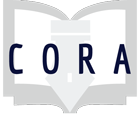Assignment
Data Literacy
This session was part of an undergraduate, critical thinking and global perspectives course. The course is offered by various disciplines on campus. This instance focused on global challenges (The Seven Revolutions developed by csis.org). For the session the students applied two frameworks to data: authority is constructed and contextual and scholarship as conversation. Students learned about a data life cycle concept with emphasis on evaluation. One of the main goals in introducing the students to the life cycle of data (see attached) was to broaden their understanding of how to search for data. Students may encounter data via social media or in a magazine article. Often those formats are more accessible and present data in a way that is easier to understand. The exercise helps students to see how data can sometimes be manipulated in those formats, while also developing search techniques to track data to its source.
Employ credible resources in studying key global challenges
Information Literacy concepts:
Individual or Group:
Ability Level:
The data literacy session was part of a semester-long, scaffolded research paper on a specific global challenge. Students were encouraged to use data to back up their arguments and research.
For future iterations of this topic, I would like for students to evaluate multiple examples of data used in journalistic writing. Both to understand how to write with data and to see how data can be employed to make a point or to support a story.

